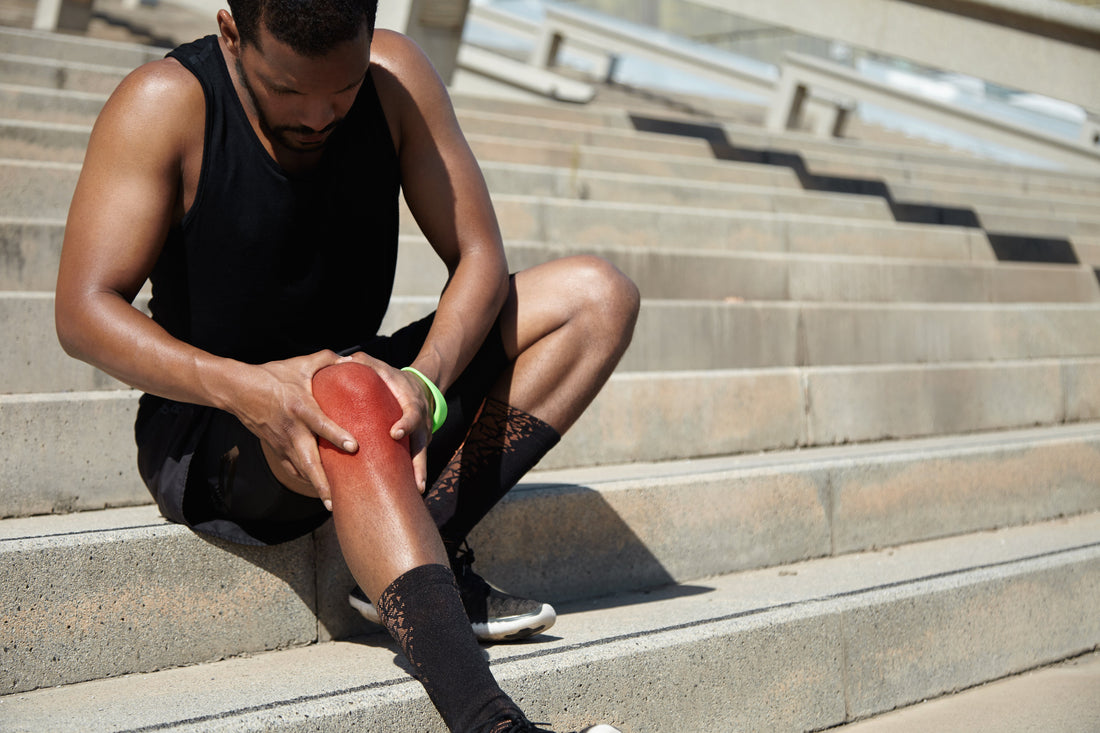
How to Prevent Common Sports Injuries with the Right Gear
Share
Participating in sports offers numerous health benefits, from improved cardiovascular health to enhanced mental well-being. However, the thrill of the game often comes with the inherent risk of sport injuries. Whether you're a seasoned athlete or a weekend warrior, understanding how to mitigate these risks is paramount to a long and healthy athletic journey. While proper training, warm-ups, and cool-downs are essential, one of the most effective and often overlooked strategies for preventing common sport injuries is investing in and utilizing the right protective gear. This article will delve into the critical role that appropriate equipment plays in safeguarding your body, helping you stay in the game and perform at your best.
Understanding Common Sports Injuries
Before we explore the gear, it's crucial to understand the types of sport injuries that commonly occur. These can range from acute, sudden injuries to chronic conditions that develop over time. Some of the most prevalent include:
- Sprains and Strains: These are among the most frequent injuries, affecting ligaments (sprains) and muscles or tendons (strains). They often result from overstretching or tearing due to sudden movements or impacts.
- Fractures: Bone breaks can occur from direct impact or repetitive stress.
- Dislocations: When bones at a joint are forced out of alignment.
- Tendonitis and Bursitis: Inflammatory conditions of tendons and bursae, often caused by overuse.
- Concussions: Traumatic brain injuries resulting from a blow to the head or violent shaking of the body.
- ACL Tears: A common knee injury, particularly in sports involving sudden stops, changes in direction, and jumping.
- Shin Splints: Pain along the shin bone, often seen in runners due to overuse.
Each of these injuries, while varied in nature, can often be prevented or their severity reduced with the correct protective equipment. The right gear acts as a buffer, absorbing impact, providing support, and stabilizing vulnerable areas of the body, thereby minimizing the risk of sport injuries.
The Role of Protective Gear in Injury Prevention
Head Protection: Helmets and Mouthguards
Head injuries, especially concussions, are a serious concern in many contact sports. Helmets are designed to absorb and distribute impact forces, significantly reducing the risk of severe brain injury. It's not just about wearing a helmet, but ensuring it's properly fitted and certified for the specific sport. For instance, football helmets, cycling helmets, and hockey helmets all have distinct designs tailored to the impacts common in their respective sports. Mouthguards, while seemingly simple, play a crucial role in preventing dental injuries, jaw fractures, and even reducing the risk of concussions by cushioning the impact to the jaw and skull. Investing in a high-quality, custom-fitted mouthguard is a small but significant step in preventing painful and costly oral sport injuries.
Joint Support: Braces and Tapes
Joints like knees, ankles, and wrists are particularly susceptible to sprains and strains due to their complex structure and the stresses placed upon them during athletic activities. Braces and athletic tapes provide crucial support and stability, limiting excessive movement that could lead to injury. Knee braces are common in sports like basketball and skiing, offering support to the ligaments and helping to prevent hyperextension or lateral movement. Ankle braces are vital for athletes in sports with frequent changes in direction, such as soccer or tennis, significantly reducing the risk of ankle sprains. Wrist guards are essential for activities like skateboarding, snowboarding, and rollerblading, protecting against fractures and sprains during falls. The key is to use these supports proactively, especially if you have a history of joint instability or are engaging in high-impact activities.
Padding: Shin Guards, Shoulder Pads, and Chest Protectors
Direct impacts are a common cause of contusions, fractures, and other traumatic sport injuries. Various forms of padding are designed to absorb these forces and protect vulnerable areas. Shin guards are indispensable in sports like soccer and hockey, shielding the lower legs from kicks and stick impacts. Shoulder pads, prevalent in football and ice hockey, protect the collarbone, shoulders, and sternum from forceful collisions. Catchers in baseball and softball rely on chest protectors to guard against fast-moving balls. These protective layers distribute the force of impact over a larger area, reducing the likelihood of localized damage and severe sport injuries.
Footwear: The Foundation of Injury Prevention
Often underestimated, appropriate footwear is perhaps one of the most critical pieces of equipment for preventing sport injuries. Your shoes are the primary point of contact between your body and the playing surface, influencing stability, shock absorption, and traction. Running shoes are designed to provide cushioning and support for repetitive impact, while basketball shoes offer ankle support and grip for quick lateral movements. Cleats are essential for sports played on grass or turf, providing necessary traction to prevent slips and falls. Ill-fitting or worn-out shoes can lead to a myriad of problems, including plantar fasciitis, Achilles tendonitis, ankle sprains, and knee pain. Always choose footwear specifically designed for your sport and replace them regularly as their cushioning and support degrade over time. Proper footwear is a fundamental step in safeguarding against lower limb sport injuries.
Other Essential Gear and Considerations
Beyond the primary categories, several other pieces of gear contribute significantly to sport injury prevention:
- Eyewear: Protective eyewear, such as goggles or sports glasses, is crucial in sports with fast-moving objects (e.g., racquet sports, basketball) to prevent eye injuries.
- Athletic Supporters/Cups: Essential for male athletes in contact sports to protect against groin injuries.
- Gloves: In sports like cycling, weightlifting, or baseball, gloves can prevent blisters, improve grip, and offer impact protection.
- Compression Wear: While not strictly protective gear in the same way as helmets or pads, compression sleeves and garments can aid in muscle support, reduce vibration, and improve blood flow, potentially reducing muscle fatigue and the risk of strains.
The Importance of Proper Fit and Maintenance
Simply owning the right gear isn't enough; proper fit and regular maintenance are equally critical. Ill-fitting equipment can be as detrimental as no equipment at all, potentially hindering movement or failing to provide adequate protection. Always ensure that helmets are snug, pads are securely fastened, and shoes fit comfortably without being too tight or too loose. Regularly inspect your gear for wear and tear. Cracked helmets, worn-out shoe soles, or frayed straps compromise their effectiveness and should be replaced immediately. Think of your gear as an investment in your athletic longevity and well-being.
Conclusion
Preventing sport injuries is a multifaceted endeavor that combines proper training, technique, and a proactive approach to safety. However, the role of appropriate and well-maintained protective gear cannot be overstated. From head to toe, the right equipment acts as your first line of defense, absorbing impacts, providing crucial support, and minimizing the risks associated with athletic activity. By understanding the specific needs of your sport and investing wisely in high-quality, properly fitted gear, you empower yourself to push your limits, enjoy your passion, and significantly reduce the likelihood of sidelining sport injuries. Stay safe, stay active, and keep playing the sports you love.
Frequently Asked Questions (FAQs)
Q1: How does proper gear prevent sports injuries?
A1: Proper gear prevents sport injuries by providing cushioning, support, and protection to vulnerable body parts. Helmets absorb impact, braces stabilize joints, and padding reduces the force of collisions, all of which minimize the risk of injury.
Q2: Is expensive gear always better for injury prevention?
A2: Not necessarily. While high-quality gear often offers superior protection and durability, the most important factor is proper fit and suitability for your specific sport. Ill-fitting or inappropriate gear, regardless of cost, can increase injury risk.
Q3: How often should I replace my sports gear?
A3: The lifespan of sports gear varies depending on the type of equipment, frequency of use, and intensity of activity. Generally, inspect your gear regularly for signs of wear and tear, such as cracks, thinning padding, or loss of support. Footwear, for example, often needs replacement every 300-500 miles for runners, or annually for other athletes.
Q4: Can protective gear completely eliminate the risk of sports injuries?
A4: No, protective gear significantly reduces the risk and severity of sport injuries, but it cannot eliminate them entirely. Injuries can still occur due to factors like improper technique, overuse, inadequate warm-up, or unavoidable accidents. Gear is one crucial component of a comprehensive injury prevention strategy.
Q5: What are the most common sports injuries that gear helps prevent?
A5: Protective gear is highly effective in preventing common sport injuries such as concussions, dental injuries, sprains (ankles, knees, wrists), fractures (shins, wrists, collarbones), and contusions. Different types of gear target specific injury types and body parts.
